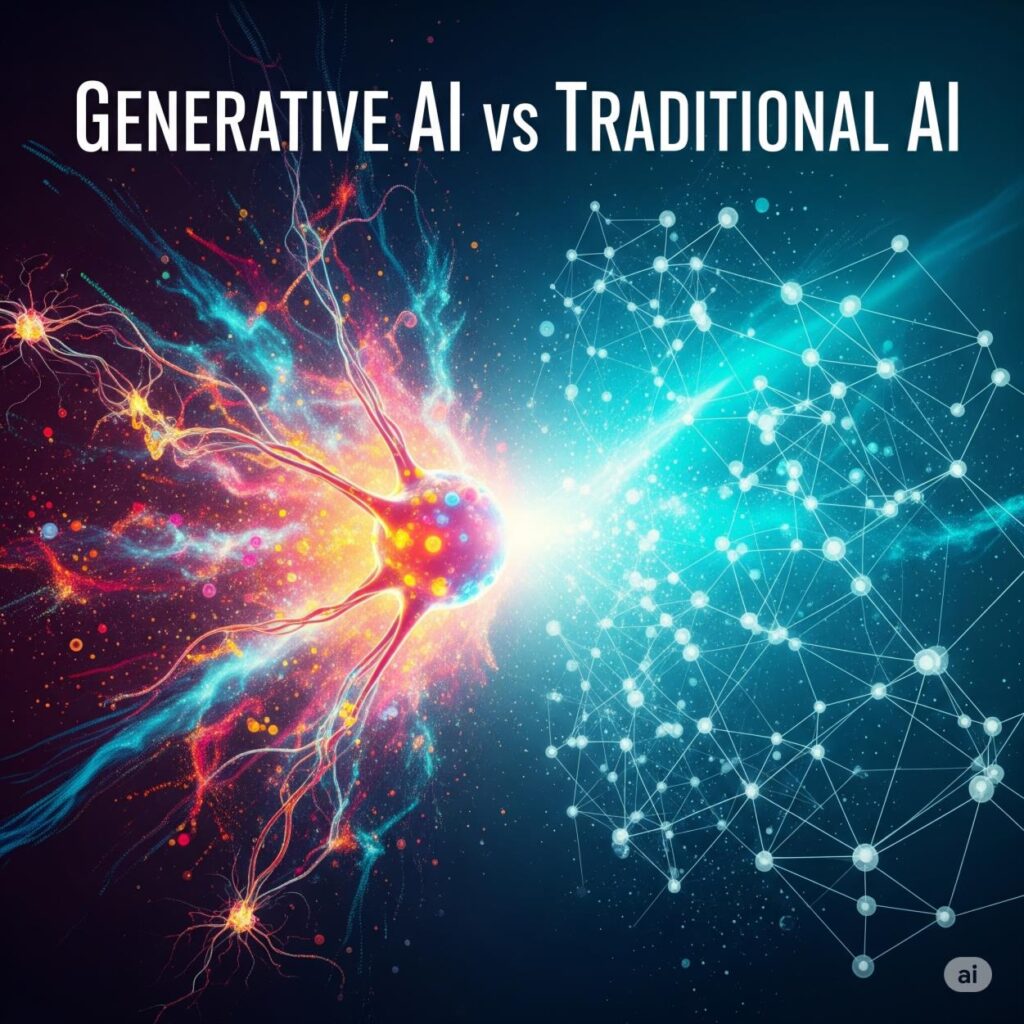AI is not one-size-fits-all. Understanding the distinction between Generative AI (GAI) and Traditional AI is essential for choosing the right technology for your business goals.
What is Generative AI?
Purpose: To create entirely new content—text, images, video, and more.
Strengths: Innovation, adaptability, and creative output.
Techniques: Uses models like Transformers, GANs, and VAEs.
Applications:
- Content generation
- Product design
- Drug discovery
At FastStrat, we use GAI to automate custom marketing creation and strategy generation—no templates, just tailored outputs.
What is Traditional AI?
Purpose: To analyze data and make predictions based on patterns.
Strengths: Accuracy, consistency, and efficiency in structured tasks.
Techniques: CNNs, RNNs, and reinforcement learning.
Applications:
- Fraud detection
- Medical diagnostics
- Risk assessment
FastStrat also integrates traditional AI to power competitive benchmarking and performance analytics—helping marketers make informed decisions fast.
The Bottom Line
| Generative AI | Traditional AI | |
| Focus | Content creation | Data analysis & prediction |
| Ideal for | Innovation & storytelling | Precision tasks |
| FastStrat uses | Strategy + content automation | Market insights & reporting |
Both forms of AI serve different but complementary purposes. At FastStrat, we combine the creative spark of GAI with the analytical power of Traditional AI—giving marketers the best of both worlds.

